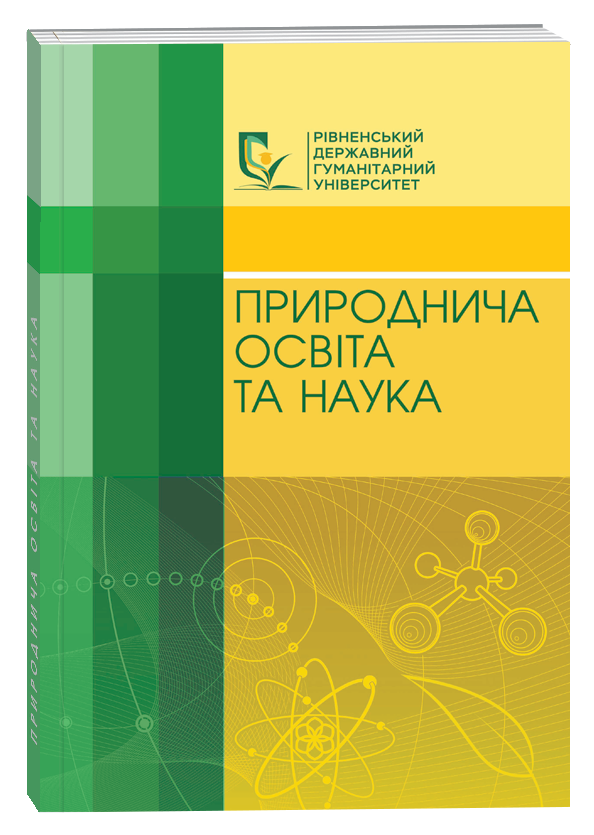CURRENT STATE AND DEGREE OF ANTHROPOGENIC TRANSFORMATION OF THE HYDROGRAPHIC NETWORK IN THE NORTHERN PART OF LVIV
Abstract
For the hydrological and hydroecological research, the territory covering the northern part of Lviv, as well as the settlements of the Lviv urban territorial community bordering from the northeast, namely the town of Dubliany, the villages of Malekhiv, Velyki Hrybovichi, Zbiranka and Murovane, was chosen. At the same time, the main aspect in the description of the research area is made on the Holoskivskyy, Zboivskyy and Malekhivskyy streams, which belong to the basin of the main river of the city, which is the Poltva. In June 2024, a field survey of the study area was conducted with an outline of the current state and degree of anthropogenic transformation of the hydrographic network of the northern part of Lviv. The survey involved researching the condition of water bodies, measuring their hydrological parameters, taking water samples, taking photos, and interviewing residents. The Holoskivskyy stream is a largest full-water tributary of the Poltva within the northern part of Lviv. It’s natural channel has been preserved for a length of about 1.0 km. The watercourse is filled thanks to springs. We investigated five springs at the source of the stream and along it`s channel (100–150 m below). The Zboivskyy stream is drying up, and the pond from which it began has turned into a swampy area. All this indicates the loss of power sources in the upper part of the stream. In the middle part of the stream, the greatest anthropogenic changes associated with the canalization of the channel were found. A similar situation with the modern transformation of water bodies within the neighboring Zboivskyy stream is characteristic of the Malekhivskyy stream. Potentially, this stream had a longer valley and higher water content, which it lost due to certain natural and anthropogenic reasons. Today, the length of the open part of the stream is 3.8 km. We note a significant decrease in the water content of streams over the past 30 years, which is due to the intensive transformation and construction of urban space, which led to their canalization. The best water situation is observed in the upper part of the Нoloskivskyy stream, where many springs have been preserved. Unfortunately, in the upper parts of the Zboivskyy and Malekhivskyy streams, construction caused their final drying up. Most of the water bodies in the study area are currently in an unsatisfactory hydro-ecological condition, they are heavily polluted and require channel cleaning works and a number of optimization measures aimed at compliance with the Water Code of Ukraine with the establishment of coastal protection strips 25 m wide. The natural and recreational potential of the studied watercourses is different and is insignificant. The upper part of the Holoskivskyy stream has the highest potential for recreational development.
References
2. Водний кодекс України. Відомості Верховної Ради України (ВВР). 1995. № 24. Ст. 189. URL: https://zakon.rada.gov.ua/laws/show/213/95-95-вр#Text
3. Геопортал міста Львова: картографічний геопортал / Львівська міська рада; ЛКП «Міський центр інформаційних технологій». Львів, 2024. URL: https://map.city-adm.lviv.ua/map
4. Гідрологія Львова. Вікіпедія. Вільна енциклопедія: укр. версія. URL: https://uk.wikipedia.org/wiki/Гідрологія_Львова
5. Гранкін П. Каналізація міста Львова (від початку XV ст. до 1939 р.) / наук. ред. Х. Харчук. Львів : Аверс, 2015. 136 с.
6. Історія львівської Полтви. ТвоєМісто: медіахаб. Львів, 2015. URL: https://tvoemisto.tv/news/istoriya_lvivskoi_poltvy_v_10ty_foto_70096.html
7. Карти Google: картографічний вебсервіс. URL: https://www.google.com/maps
8. Карелін О. Полтва – Львовом ув’язнена ріка: краєзнавчі нариси. Львів : Каменяр, 2021. 66 с.
9. Озеро Стосика. Вікіпедія. Вільна енциклопедія: укр. версія. URL: https://uk.wikipedia.org/wiki/Озеро_Стосика
10. Пахолюк О.Т. Гідромережа як природний каркас під час формування зеленої зони міста Львова. Науковий вісник НЛТУ України. 2014. Вип. 24.3. С. 101–105.
11. Степанів О. Сучасний Львів. Краків, Львів : Українське видавництво, 1943. 168 с.
12. Топографічні мапи України, росії, білорусі. Сайт Петра Власенко. Київ, 2024. URL: https://maps.vlasenko.net
13. Шушняк В., Савка Г., Вергелес Ю. Результати інвентаризації водних об’єктів м. Львова. Вісник Львівського університету. Серія географічна. 2014. Вип. 48. С. 322–327.
14. Arcanium Maps: maps webservice. Budapest, 2024. URL: https://mapire.eu
15. Archiwum Map Wojskowego Instytutu Geograficznego 1919–1939: mapywig. URL: http://www.mapywig.org






